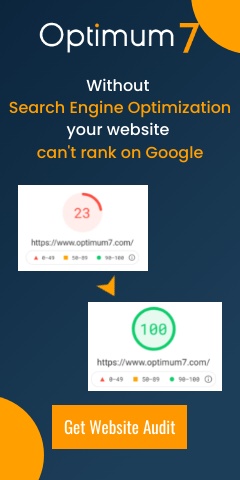In terms of SEO, creating great meta titles and descriptions is always a marketer’s first step. This is the information that Google uses to define what is on a page and what is displayed to individuals using search engines. Often, you will find yourself in a position where you need to write 1000’s of unique Meta titles and descriptions all at once. This may seem like a daunting task, especially for an eCommerce site with thousands of products, but there are two easy steps you can take to ease the process.
Step One:
The first step is always to export a list of your entire site’s existing metadata as a CSV file. You can do this in a multi-step process by first downloading the homepage, main category pages, contact us pages, etc. followed by downloading the subcategory pages and the individual product pages themselves. This file will serve as your workbook.
Generally, you should start by writing your title tags. The title tags are the most important but as they are limited to 50 – 60 characters, you will be limited in what you can say. Therefore, titles are somewhat easier to write. Just include the basic information such as the company name and a brief description of the content of the page. Descriptions, on the other hand, can be more challenging to write. Meta descriptions should be up to 150 – 160 characters leaving room for variation.
It should be easy enough to write good meta descriptions for the homepage and other main pages, and these pages deserve extra attention as these are the pages most frequented by users who search for your site. Writing great metadata on these pages should directly lead to a higher CTR (click-through-rate.)
Step Two:
Next, move onto the subcategory pages. This is where it will begin to get tricky for eCommerce sites as there are hundreds of pages that help the user browse the site and choose a selection of products. For example, when writing metadata for a client that sells auto parts, “Colonel Suspension,” there are categories that allowed users to browse by make, model, year etc. As a result, there was an individual page for parts by a particular make, an individual page for parts for every car model, and an individual page for all car parts made for vehicles in a specific year. In total, there are 850 pages excluding the main pages and product pages themselves.
All of these pages needed the same message, “See COMPANY NAME’s selection of PARTS for the VEHICLE.” This message consists of three main elements, the company’s name, the item being sold, and the vehicle. These 850 pages needed unique titles and descriptions that display a version of that same message. I thought to myself, How the hell am I going to find 700 ways to say that?
Structuring the Message
To accomplish this without using formulas that are penalized by Google, I broke down the structure of the message. First I gathered a list of all the products on that were being sold on each page. Staying with the same “Colonel Suspension” example, the client sold: leaf springs, coil springs, timbrens, Roadmaster suspension, leaf spring bolts, U bolts, add a leaf kits, shackles, bushings and a few more items. This presents an opportunity to use different combinations and orders of these items in the description to add variety. Structure it like this:
• See Colonel Suspension’s selection of U-bolts, Leaf Springs and more for Blank Vehicle.
• See Colonel Suspension’s Selection of Timbrens Leaf Springs and more for Blank Vehicle.
• See Colonel Suspensions Selection of U-bolts, Shackles, and more for Blank Car.
Now this is a good start, but I needed to build off this. The next section of the sentence I looked at was the beginning of the meta description “See Colonel Suspension’s Selection.” I asked myself: How many ways can I say this? Here are some examples:
• Browse our selection
• See our selection
• Colonel Suspension has a selection
• Browse Colonel Suspension’s
• Our selection of
The next step is to examine the final part of the description, “and more for a Blank car.” How many different ways can we write this?
• and more for your Blank Car
• and more for the iconic Blank car
• example for
Next, I would add in a company or service description that is not directly related to the page itself, but the company in general.
• Delivered straight to your door
• at the lowest prices
• “Colonel Suspension, the leader in vehicle suspension since 1980”
• to keep your vehicle running like new
After doing all of these steps, add a few interchangeable adjectives throughout the description. Now move around the arrangement of parts of the sentence and you get something like this.
• Browse Colonel Suspension’s selection of U-bolts, Leaf Springs and more for the iconic Chevrolet corvette
• See our selection of OEM timbrens, shackles and more for the Chevy corvette to keep your vehicle running like new
• Colonel Suspension has a full selection of the best Roadmaster suspensions, bushings and more for your Chevy vehicle at the lowest prices
• U-bolts, shackles and more for your Chevrolet Corvette from Company Name, the leader in vehicle suspensions since 1980.
• Get OEM Suspension parts including U-bolts, Leaf springs and more for your Chevy Corvette delivered straight to your door by Company Name.
As you can see, all of these descriptions have the same message, just presented in different ways. By breaking the description down into different sections and writing multiple, interchangeable versions, you can combine these and restructure the sentence to generate hundreds of easy and unique meta descriptions for any site. This structure of breaking down a message can be applied to any website and any kind of category or product page. An essential element here is to write this meta information completely unique and not have any kind of pattern or formula. Remember, you are writing these for the users, not search engines.
As you begin writing, you will get more creative and find other variables to make your descriptions better and more unique. Don’t be afraid to stray from the structure and write a completely different meta description as well. Variety is the spice of life. If you still feel as if writing your meta tags is too time consuming or you just do not have the resources, contact the experts at Optimum7 today!





